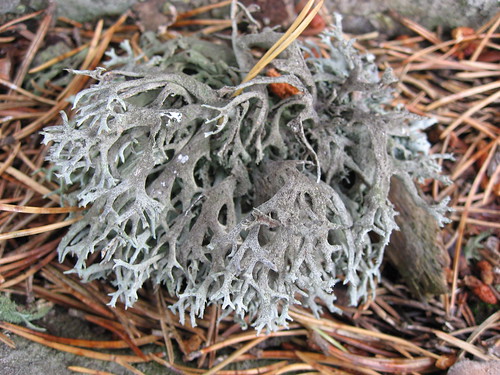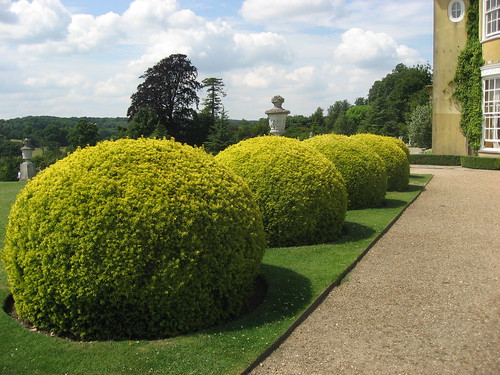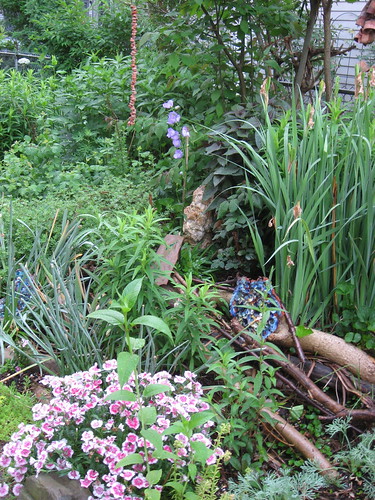
In all fairness, it didn't seem that way at the time. A hard-won thesis, good grasp of species concepts, and a fine (if I do say so myself) statistical paper correlating species distributions to geography, were ample reward for all the work and sacrifice. And I can say I looked forward to a strong current of research as I studied the fascinating world of lichen morphogenesis.
So, what's with the order and disorder? I didn't set out wanting to write about my PhD work. It's pretty much ancient history anyway.
I started this post thinking about garden landscapes. Garden aesthetics go in and out of style (so do scientific ideas, believe it or not!) and they seem to reflect something of the society in which they're created. I think I could do a whole thesis on garden aesthetics, something that, ironically, connects to questions of order and disorder.
What do "ordered" gardens tell us? For centuries, botanical collections were arranged in some kind of order, whether the order reflected the "four corners" of the earth or the "order" in which plant families were arranged. Formal gardens created a world of order that followed particular aesthetic pathways.
During the Arts and Crafts movement of the late 19th century a kind of "disorder" came to represent garden design, a kind of aesthetic argument against borders. In a rapidly urbanizing, industrializing society, the desire to recall a more "natural" or "pastoral" setting dominated. Later, unruly "borders" repudiated this argument, whether knowing or unknowing.
Our Cambridge, Massachusetts garden is all border. We couldn't help it. The ten-foot wide garden we tend surrounds one side of the footprint of the house in front. It's about 40 feet long and runs along the house in front of us. What would you do with a space like this?
As a botanist and something of an ecologist I recognize the "moments" of sunlight, shade, moisture, drought, and openness that occur in different parts of the garden. The plants that occupy the garden change each year. Sometimes it's because I planted something, sometimes a squirrel planted something. And of course things die. I build the garden each year based on these moments. As the garden matures, I set it up to provide color for more and more of the year. One of my goals is to nurture diversity. And there seems to be an uphill struggle against species that would overtake the landscape, since most of the plants we use in temperate gardens are prone to be weedy. Each year I struggle with what seems to be an eternal human question: What constitutes order--Neatness? Careful attention to detail? Good height relationships? Or is order something else altogether--a sort of "natural" order? How do we impose order on the landscape? What are our goals for tending the landscape? And if we fail to introduce or maintain order, what does "disorder" comprise?







No comments:
Post a Comment